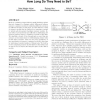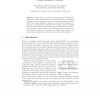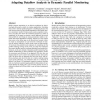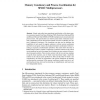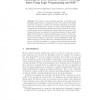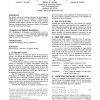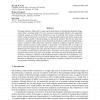DAC
2011
ACM
13 years 5 months ago
2011
ACM
Memory consistency litmus tests are small parallel programs that are designed to illustrate subtle differences between memory consistency models by exhibiting different outcomes...
APLAS
2011
ACM
13 years 5 months ago
2011
ACM
Modern multi-core microprocessors implement weak memory consistency models; programming for these architectures is a challenge. This paper solves a problem open for ten years, and ...
TC
2011
13 years 12 months ago
2011
— Implementing shared memory consistency models on top of hardware caches gives rise to the well-known cache coherence problem. The standard solution involves implementing cohere...
ASPLOS
2010
ACM
14 years 8 months ago
2010
ACM
Online program monitoring is an effective technique for detecting bugs and security attacks in running applications. Extending these tools to monitor parallel programs is challeng...
HIPC
2000
Springer
14 years 9 months ago
2000
Springer
Abstract. Simple and unified non-operational specifications of the three memory consistency models Total Store Ordering (TSO), Partial Store Ordering (PSO), and Relaxed Memory Orde...
CAV
2010
Springer
14 years 9 months ago
2010
Springer
Well-defined memory consistency models are necessary for writing correct parallel software. Developing and understanding formal specifications of hardware memory models is a chal...
HICSS
1999
IEEE
14 years 9 months ago
1999
IEEE
The behavior of Distributed Shared Memory Systems is dictated by the Memory Consistency Model. Several Memory Consistency Models have been proposed in the literature and they fit ...
CHARME
2003
Springer
14 years 10 months ago
2003
Springer
We present a non-operational approach to specifying and analyzing shared memory consistency models. The method uses higher order logic to capture a complete set of ordering constra...
SPAA
2003
ACM
14 years 10 months ago
2003
ACM
The general problem of verifying coherence for shared-memory multiprocessor executions is NP-Complete. Verifying memory consistency models is therefore NP-Hard, because memory con...
IEEEPACT
2003
IEEE
14 years 10 months ago
2003
IEEE
This paper presents a framework for analyzing the performance of multithreaded programs using a model called a constraint graph. We review previous constraint graph definitions fo...
